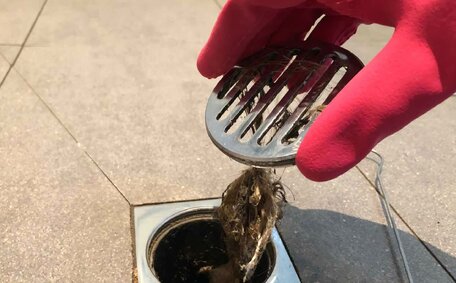Introduction to Gas Pipeline Lifespans
Strathfield Plumbing recognises the importance of long-lasting gas pipeline infrastructure. The lifespan of a gas pipeline spans from construction to either replacement or abandonment. There are many factors that influence how long a pipeline remains viable and serviceable.
In general, a well-designed and properly maintained gas pipeline can have a lifespan of 50 years or more. Yet, factors such as corrosion, soil shifts, external interference, and changing energy policies can affect a gas pipeline’s lifespan. Regular inspections and integrity assessments, beyond basic maintenance, are essential for the safe operation of gas infrastructure.
When pipelines near the end of serviceable life, pipeline operators face decisions around replacement, refurbishment, or decommissioning. Decisions must weigh the costs, safety, environmental impact, and energy requirements. As your local plumbing experts, we’re here to answer any questions around gas pipeline lifecycles and infrastructure in our community.
Typical Lifespan Expectations for Gas Pipelines
Gas pipelines are generally designed and constructed with an expected lifespan of 40-50 years under normal operating conditions. Strict manufacturing standards and high-grade steel mean a pipieline can safely last for decades even with exposure to moisture and temperature variations.
Multiple factors determine whether a pipeline reaches or exceeds this design life benchmark. Materials, construction methods, operational practices, and environmental conditions are all crucial factors. Research indicates that with appropriate care, some pipelines can operate for more than 50 years.
Here at Strathfield Plumbing, all of our gas fitting and servicing adheres to Australian standards concerning materials, procedures and safety. We stay up-to-date on the latest methods for maintaining and assessing pipelines at every stage - from initial installation to eventual replacement.
As gas systems age, small issues can lead to bigger problems if left unaddressed. Our skilled technicians can assess the lifespan of pipelines and provide recommendations.
Pipeline Materials and Their Typical Lifespans
The most common materials used for constructing gas pipelines are steel and polyethylene plastic. Under ideal conditions, steel pipelines are expected to last over 50 years. The lifespan of polyethylene pipelines is estimated to be around 100 years.
Steel has been the predominant pipeline material for many decades thanks to its durability, strength and corrosion resistance when properly maintained. Several factors, including pipe thickness, grade, operating pressure, and soil conditions, affect the lifespan of steel pipelines. While minor corrosion is manageable, eventual replacement may be necessary.
Polyethylene’s flexibility and seamless makeup minimise leak risks. Polyethylene is largely resistant to corrosion and moisture absorption.
Proper materials selection is key to functional longevity, and we stay informed on the latest pipeline innovations and lifespan expectations.
Factors Impacting Gas Pipeline Lifespans
Operational stresses, environmental conditions, and maintenance protocols are key factors that influence gas pipeline longevity.
Operationally, high pressures or frequent pressure changes can cause material fatigue, thereby shortening the pipeline’s lifespan.
Moreover, high flow rates contribute to wear and tear. Temperature changes also impose stress on pipelines. Careful pressure and flow regulation is thus essential.
Environmental conditions are also a major influence. Corrosive soil chemistries can degrade pipelines prematurely.
Regular maintenance and assessment is crucial for addressing risks before they escalate into problems. At Strathfield Plumbing, we use the latest inspection methods to check for corrosion, leaks, ground movement effects, and more. Performing repairs, replacements, or upgrades early maximises safety and longevity.
Adhering to best practises around operations, being mindful of environmental risks, and keeping up consistent maintenance are key to extracting the fullest lifespans from gas pipeline assets. Strathfield Plumbing, with years of experience, can effectively manage these issues.
Environmental Conditions and Their Effects
Here in Strathfield and the broader Sydney area, there are certain environmental conditions that can influence the lifespan of in-ground gas pipelines. Particularly, Sydney’s prevalent clay-based soils may retain moisture and cause corrosion.
We also experience periods of heavy rainfall, flooding, and soil shifting that puts strain on pipeline assets. Sydney’s winters introduce additional challenges, including soil temperature changes and contraction/expansion effects.
At Strathfield Plumbing, we factor the unique climatic and geological aspects of Strathfield and Sydney into the scope of our inspection and maintenance work.
We also advise homeowners and businesses on best practises tailored to local conditions. This includes updating corrosion protection, ensuring proper pipeline depth and bedding, minimising stress, and responding suitably to heavy rainfall or floods.
Keep in mind, while environmental risks exist, modern pipelines are resilient when properly assessed and maintained. So engage your local specialists at Strathfield Plumbing to maximise lifespan under local conditions.
Maintenance and Inspection Requirements
Regular inspection and maintenance is vital for gas pipelines to achieve maximum lifespan potential. Australian standards mandate certain safety checks and integrity assessments to avoid issues going unnoticed.
Our licenced technicians are rigorously trained to carry out pipeline inspections in accordance with NSW regulations. We utilise methods like smart pigging to gauge wall thickness and identify corrosion issues. Other advanced tools can detect tiny gas leaks and other deficiencies.
Beyond state-mandated assessments, we recommend our commercial and residential customers establish more frequent maintenance plans with us. This allows for minor repairs, adjustments, or upgrades to occur on an as-needed basis between major inspection milestones.
Well-maintained pipelines that undergo regular monitoring rarely experience safety or integrity failures even after decades of use. Taking a proactive maintenance approach minimises costs over the long term compared to emergency repairs or rushed replacements later on.
As Strathfield’s trusted local plumbing experts, we have the skills and experience to keep your gas pipelines functioning safely. Contact our team to implement a comprehensive inspection and maintenance plan customised to your assets.
The Impact of Renewable Energy Sources
Renewable energy sources such as solar and wind are reducing Australia’s long-term natural gas demand. As sustainability goals aim for net-zero emissions by 2050, reliance on gas pipelines is expected to decline over the coming decades.
Due to reduced gas demand, the Dampier Bunbury Natural Gas Pipeline’s projected end-of-life date moved from 2028 to 2040. Major pipeline projects risk becoming unviable investments with renewables expected to account for 30 to 50 per cent of national energy generation by 2030.
Though pipelines will remain integral through the transition, falling utilisation rates will impact maintenance budgets and replacement decisions as gas usage drops.
Our expertise encompasses renewables like solar hot water alongside traditional gas systems. We help homeowners and businesses navigate infrastructure changes environmental sustainability and energy regulations evolve. Contact Strathfield Plumbing to understand how the shift to renewables could impact your gas pipes and heating needs.
Decommissioning and Replacement of Aging Pipelines
Owners and operators must decide to decommission or replace gas pipelines as they near the end of their functional lifespan. There are several erations include long-term environmental impact, costs, and impacts on consumer supply from lost capacity.
Urban expansion over previously vacant lands complicates the replacement of ageing pipelines. The costs involved with materials, excavation, new easement negotiations, and restoration work can run into the millions. Owners weigh these expenses against projected utilisation given demand forecasts.
Here at Strathfield Plumbing, we keep abreast of the pipeline industry trends including local infrastructure lifespan projections and decommissioning plans from pipeline operators. Replacement or capacity upgrading projects importantly provide continued safe and reliable gas delivery. We assist homeowners during infrastructure transitions whether that means new connections, metre adjustments, or amenity improvements.
Even as components such as meters or regulators require periodic replacement, well-maintained pipelines with quality materials can operate unfalteringly for many additional years. Contact Strathfield Plumbing to understand options around your gas utilities as infrastructure ages over time.
Abandoning vs. Removing End-of-Life Pipelines
When gas pipelines reach end-of-life after 40-50 years of use, owners must decide between abandoning or removing the assets. both options lead to the pipeline no longer being in service and ensuring residual gas is safely purged.
This avoids excavation costs, but leaves assets susceptible to damage from soil movement or construction.
Rusting steel can also leach chemicals over time.
Removing pipelines means fully excavating and extracting all underground assets. This eliminates environmental risks but has high costs for excavation, restoration, and waste disposal. Removed steel can be recycled to recover some value.
Here at Strathfield Plumbing, We stay updated on the latest regulations for when pipelines reach the stage of abandonment or removal. We provide customers with advice that considers technical, environmental, and economic aspects to recommend the best approach for their specific situation and location.
While abandonment may suffice in some cases, removal better prepares sites for renewal projects like new housing. Contact Strathfield Plumbing to understand your options for dealing with ageing gas pipelines.
Policy and Legal Considerations
There are important policy and legal considerations around gas pipeline lifecycles. Safety regulations mandate certain standards for materials, construction techniques, maintenance, and inspection. Gas pipelines fall under the Gas Supply Act 1996 here in NSW.
This covers aspects like mandatory licences for design/installation, restrictions on building near pipelines, decommissioning obligations, and more. As a licenced and insured plumbing company, Strathfield Plumbing keeps fully up-to-date on changing legislation in order to remain compliant across all our gas fitting services.
We comply with the Plumbing Code of Australia, national Pipeline Standards, and local council mandates. Homeowners and businesses can feel confident knowing Strathfield Plumbing always operates safely, legally and to best practise standards concerning any work on gas pipelines or related assets.





